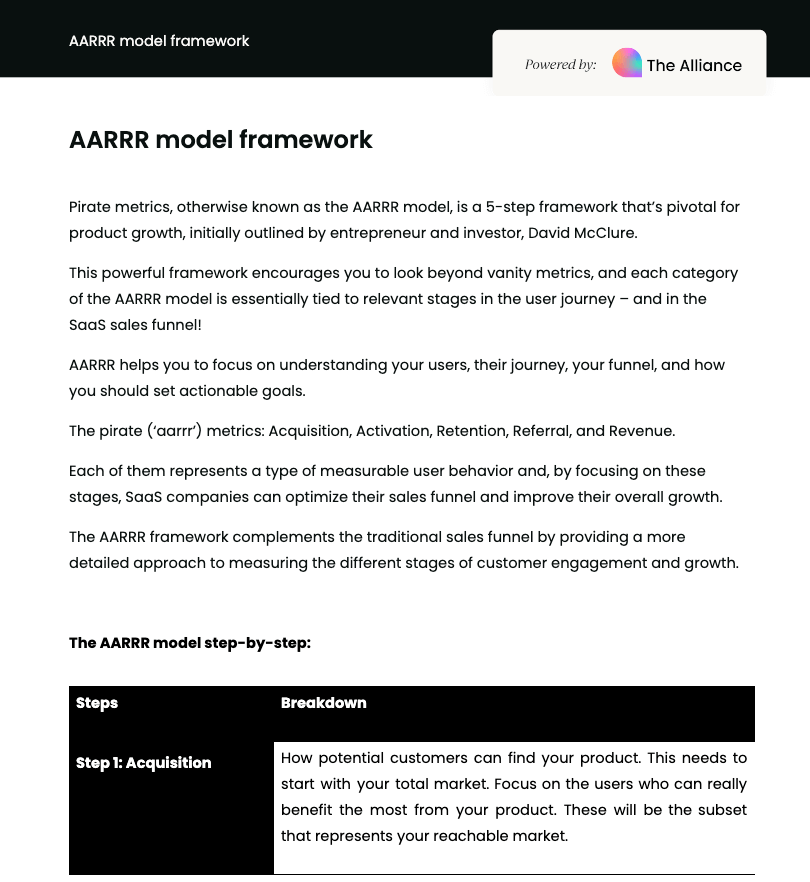What is the AARRR framework?
The AARRR framework, also known as the Pirate Metrics framework, is a strategic model used to analyze and optimize the customer journey.
Originally created by Dave McClure, the AARRR framework helps businesses break down the customer lifecycle into five key stages:
- Acquisition: This stage focuses on how potential customers find your product or service. It involves tracking the channels through which users discover you, such as social media, search engines, or direct marketing efforts.
- Activation: Activation measures the first impression and initial user experience. It's about ensuring that users have a positive and engaging experience from the start, often marked by a specific action like signing up or completing a profile.
- Retention: Retention tracks whether users return to your product after their initial experience. High retention rates indicate that users find ongoing value in your product, leading to repeat engagement.
- Revenue: This stage measures how your product generates income. It includes tracking the conversion of users into paying customers and understanding the different revenue streams.
- Referral: Referral examines how satisfied customers recommend your product to others. It’s a measure of customer satisfaction and the viral potential of your product.
How to use our AARRR template
Once you've downloaded the template (below), check out this step-by-step guide on how to use it 👇
Define Metrics for Each Stage:
- Acquisition: Track website visits, click-through rates, and new users from different channels.
- Activation: Identify key actions like account creation or first purchase.
- Retention: Measure daily active users (DAU), monthly active users (MAU), and churn rate.
- Revenue: Monitor average revenue per user (ARPU), customer lifetime value (CLV), and conversion rates.
- Referral: Track referrals, net promoter score (NPS), and social shares.
Set Up Tracking Tools:
- Use tools like Google Analytics, Mixpanel, or Amplitude.
- Implement tracking pixels, UTM parameters, and conversion funnels.
Analyze Data and Identify Bottlenecks:
- Review data regularly to spot underperforming stages.
- Look for trends indicating where users drop off or lose interest.
Optimize and Experiment:
- Conduct A/B tests to improve each stage, like onboarding processes for better activation.
- Collect user feedback for continuous improvement.
Align Teams and Strategies:
- Ensure marketing, product, sales, and customer success teams align with AARRR metrics.
- Create a unified strategy to drive growth and customer satisfaction.
Report and Adjust:
- Regularly update stakeholders on AARRR metrics.
- Adjust strategies based on insights and experiments.
Download our AARRR framework template





















 Follow us on LinkedIn
Follow us on LinkedIn 

.svg?v=aaaf5e025a)